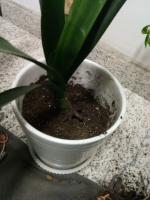Is Cell Membrane in Plant and Animal Cells
Introduction
The cell membrane is a vital component of all living cells. It separates the cell from its external environment and controls the passage of substances into and out of the cell. There are slight differences in cell membrane structure between plant and animal cells, and this article will explore these differences and similarities.
Structure of Cell Membrane
The cell membrane, also called the plasma membrane, is composed of a phospholipid bilayer. It has a hydrophilic (water-loving) head and hydrophobic (water-fearing) tail. The heads face outward, while the tails face inward, creating a barrier to water-soluble molecules. In addition to phospholipids, the cell membrane also has proteins, carbohydrates, and cholesterol. These different components give the membrane different functionalities.
Cell Wall in Plant Cells
Unlike animal cells, plant cells have a cell wall outside of the cell membrane. The cell wall is made up of cellulose and gives the plant cell rigidity and support. The cell wall also allows for the exchange of water and nutrients, but it restricts the passage of larger molecules. The cell membrane in plant cells, like in animal cells, is responsible for regulating the passage of substances into and out of the cell.
Channels, Receptors, and Enzymes in Cell Membrane
Both plant and animal cells have channels, receptors, and enzymes embedded in their cell membranes. Channels allow for the passive transport of small molecules, like ions, across the membrane. Receptors are proteins that bind to specific molecules called ligands and trigger a cellular response. Enzymes in the membrane catalyze chemical reactions, like breaking down nutrients for energy. These functions are essential for cellular homeostasis and allow the cell to interact with its environment.
Conclusion
In conclusion, the cell membrane is a key component of all living cells, and although there are slight differences in structure between plant and animal cells, the functions of the cell membrane are similar. Both plant and animal cells rely on the membrane鈥檚 channels, receptors, and enzymes to maintain normal cellular activity. Understanding the properties of the cell membrane is crucial for understanding how cells interact with their environment and how they maintain homeostasis.

 how many times do yo...
how many times do yo... how many planted tre...
how many planted tre... how many pine trees ...
how many pine trees ... how many pecan trees...
how many pecan trees... how many plants comp...
how many plants comp... how many plants can ...
how many plants can ... how many plants and ...
how many plants and ... how many pepper plan...
how many pepper plan...































